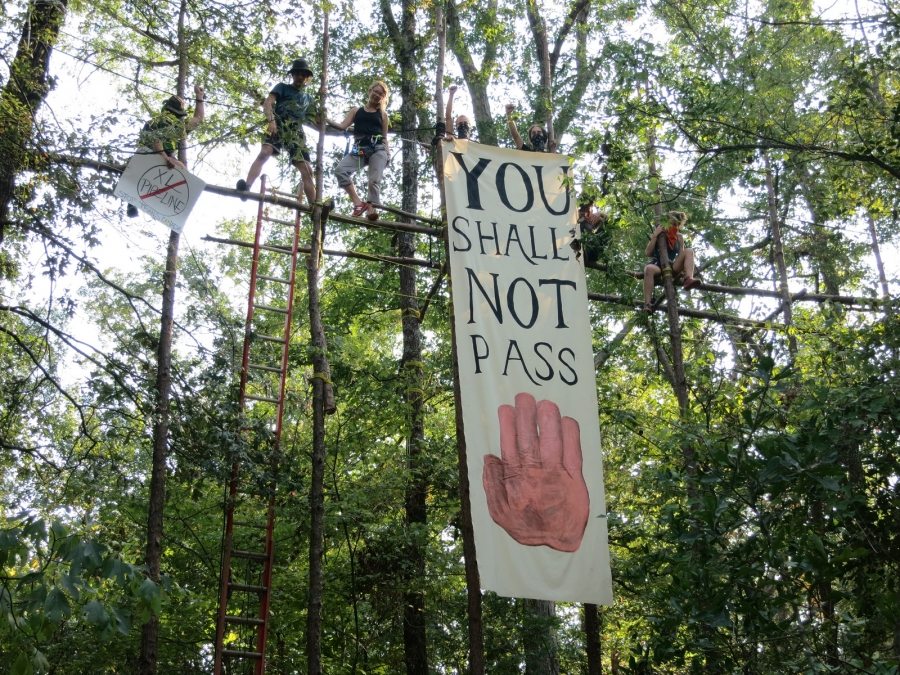David Lewis makes the occasional pilgrimage to Sand Ridge Cemetery to pay his respects, but not to a dearly departed relative. The cemetery is just a few miles from his home in Newton County, near the Louisiana border. It sits on a giant sandhill, along an unpaved road lined with quaking bogs and freshly planted pine trees. The sandy soil and the bogs are just a few of the natural anomalies to be found in Texas’ easternmost county, but Lewis is on the hunt for something even rarer.
A decade ago he found a group of unusual mushrooms growing in this cemetery at the base of a tree draped in Spanish moss. Five cream-colored Amanitas, the most toxic genus of mushroom, had sprouted. The Amanita westii, with its wart-covered cap, is not particularly beautiful, but Lewis was overjoyed at the find: He’d come across this particular species only once in nearly four decades of cataloging mushrooms. Such uncommon finds are why he calls East Texas “the last frontier” for mushroom hunters. On his 60 acres alone, outside the town of Newton, he has logged 550 species of mushrooms since 1995, and that’s just a fraction of what’s out there in the neighboring Big Thicket.
Lewis, a 69-year-old retired paper mill chemist, is the longtime president of the Gulf States Mycological Society. Texas Mushrooms: A Field Guide calls him “probably the most knowledgeable person on Texas mushrooms.” Such a reputation has attracted a lot of attention from strangers. People often call his home phone to ask where they can find hallucinogenic mushrooms (Psilocybin cubensis). Lewis says he can’t help with that — he’s never ingested them himself (“I’m too neurotic,” he says) — but he will identify any mushroom that comes his way, illegal or otherwise (video below). “I don’t want them to eat an Amanita and get killed,” he says. Lewis approaches mushrooms from a purely scientific perspective. He laughs when asked if he talks to mushrooms or believes in their healing properties. Instead, he offers the story of a man with cancer who called to ask if Lewis could get him some turkey tail, a mushroom reputed to strengthen the immune system. “I sent him a pound of this stuff,” Lewis says, “but I never heard back from him, so I don’t know if he lived or not.”
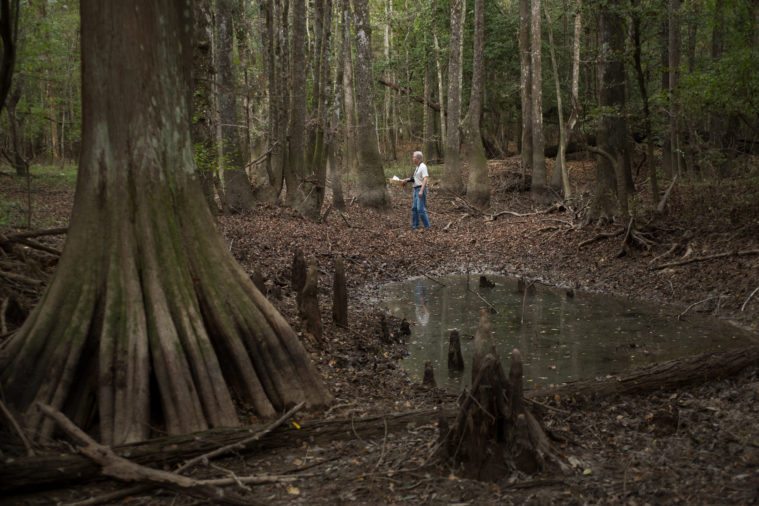
The forests of East Texas are full of mushrooms, thanks to the heaviest rainfall in the state and the abundance of pine, oak and beech trees, on which mushrooms rely, and vice versa. After a heavy rainfall, edible mushrooms such as chanterelles appear, as Lewis says, “like gold nuggets as far as the eye can see.” Born in Beaumont and raised in Vidor, Lewis has collected so many mushrooms over the years that he has yet to catalog them all. Dried, shrunken specimens are stored in old Kodak film boxes, and handwritten notecards have yellowed with time. What he has documented, he has passed along to Mona Halvorsen, director of the Thicket of Diversity project, for inclusion in the Big Thicket Association’s All Taxa Biodiversity Inventory.
Even though the Thicket is one of the most fruitful places in Texas — even the world — to find such a diversity of wild mushrooms, the current state of mycology in Texas is “lacking,” according to Lewis. “One of my friends said that we know so little about mycology in the South because those Yankee mycologists won’t come down and stay in the summer,” he says. Over time, the inventory — part of a nationwide project — will attempt to catalog all of the living species of the Thicket, right down to the microscopic tardigrade, or water bear. So far, the inventory has newly documented at least 190 species of mushrooms in the preserve, including 99 never before found in the state and 25 that are potentially new to science altogether. Lewis anticipates that the count will be much higher once all the data are in. His personal tally is 660 species in the Big Thicket from 1976 to 2015. This rivals, if not surpasses, the counts at other national preserves, but what’s especially fascinating about the Big Thicket is that it is an “ecological transition zone — the westernmost point where we find a lot of eastern species, and the easternmost point where we find a lot of western species,” says Jason Ginder, chief of interpretation and education in the Big Thicket for the National Park Service. It’s “at the very edge of the ecosystems that these species can live in,” he says.
Lewis’ work on Texas mushrooms is changing that, as is the Biodiversity Inventory, which is attracting researchers from all over the world to study life in the preserve and nearby forests. Their findings are proving what people have been saying about the Big Thicket for the past century: that it really is the biological crossroads of North America, and among the most biodiverse habitats on the planet. “The leaves have fallen on these hammocks for thousands and thousands of years,” observed Hardin County Judge Leak Bevil in a 1970s oral history of the Big Thicket, “and that ground is a natural loam that will grow anything on earth. … It’s a botanical paradise.”
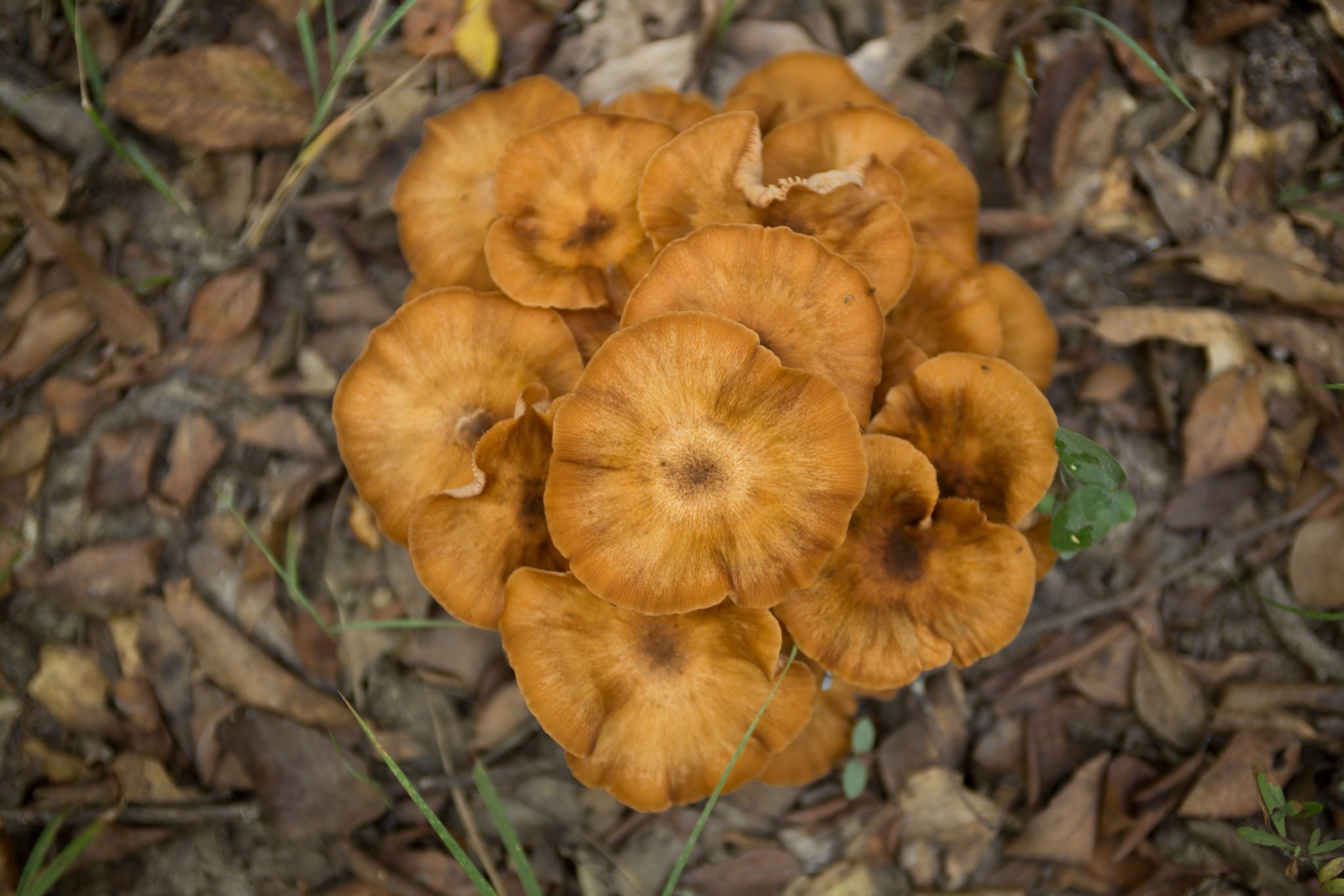
The first biological survey of the Big Thicket, conducted by Texas A&M scientists in 1936, predicted that if the forest was not preserved “somewhat near its original condition,” then fungi and other “lower plant life” would face destruction. This would be a disaster, H.B. Parks and V.L. Cory wrote, since “within the greater Big Thicket area there are a large number of unknown and undescribed species of fungi, some of them being of great beauty and of good size.” The mushroom is no small part of that ecosystem, and a key to the health of the forests that define the Thicket. When a timber company clears a patch of land and plants new trees, underground networks of the mushrooms’ root-like mycelium attach to the roots of the new trees almost immediately. Mushrooms are the fruiting bodies of the mycelium, and can help the tree grow and decompose after it dies. “The mushroom gets sugars from the tree, because they can’t make their own sugars, and the tree gets water and nutrients from the mushroom,” Lewis says. The fungus’ mycelia are even more deeply entrenched in the soil than tree roots.
But by the time President Gerald Ford granted the Thicket national preserve status in 1974, the nature of the forest had substantially changed. More than a century of clear-cutting by timber companies had decimated the landscape. “Whole Texas Town Sold For Salvage; Price $100,000,” read a 1943 newspaper headline trumpeting Wier Longleaf Lumber Company’s sale of the company town Wiergate once local supplies of prized longleaf pine had been depleted. An original 3.3 million acres of thicket — much of it old-growth trees up to 6 feet in diameter — had been reduced by logging and development to just over 100,000 protected acres. What was lost in terms of biodiversity will never be known.
***
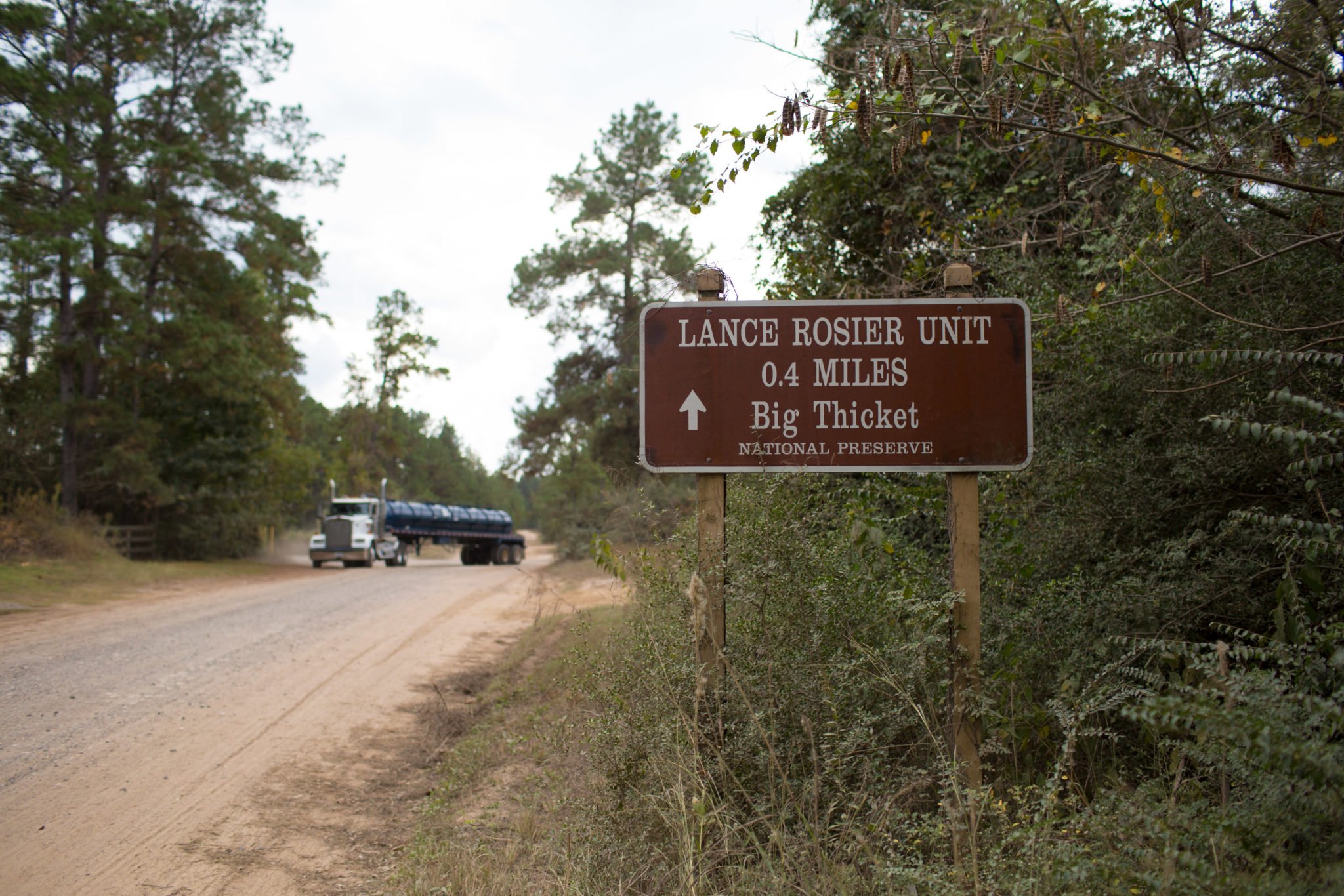
There are no officially marked trails in the Lance Rosier Unit of the Big Thicket, just a few waypoints on the map, such as the Bridge to Nowhere and the newly discovered Pitcher Plant Field. This particular unit is one of the wildest of the Thicket’s 15 units, accessed off the main road of Saratoga, an oil and timber town. Pumpjacks can be seen bobbing alongside dirt roads, and blue sky peeks out behind thin rows of towering pines that conceal clear-cuts. More than a few pipeline rights-of-way crisscross the forest, but overall the Rosier Unit’s 25,000 acres bring to mind folklorist Francis Abernethy’s description of the Thicket as a “cool green womb.”
Instead of letting out-of-towners wander into the forest on their own, Halvorsen guides researchers to the best places to find crayfish, snails, or whatever small facet of life they’re studying. “If it looks like Shrek took a bath in it,” she says, “it’s the best place to find stuff.” Halvorsen has gotten lost only twice. Once, she forgot the pack with her compass and water and had to rest on her back in a spring to wait out the heat of the day. She found her way out, but by then, emergency responders had arrived. They thought she had trekked into the woods without her pack for a “last time out in the field,” she says, but she had been thrown off-course because “the hogs had torn [the land] up so much that I got turned around.”
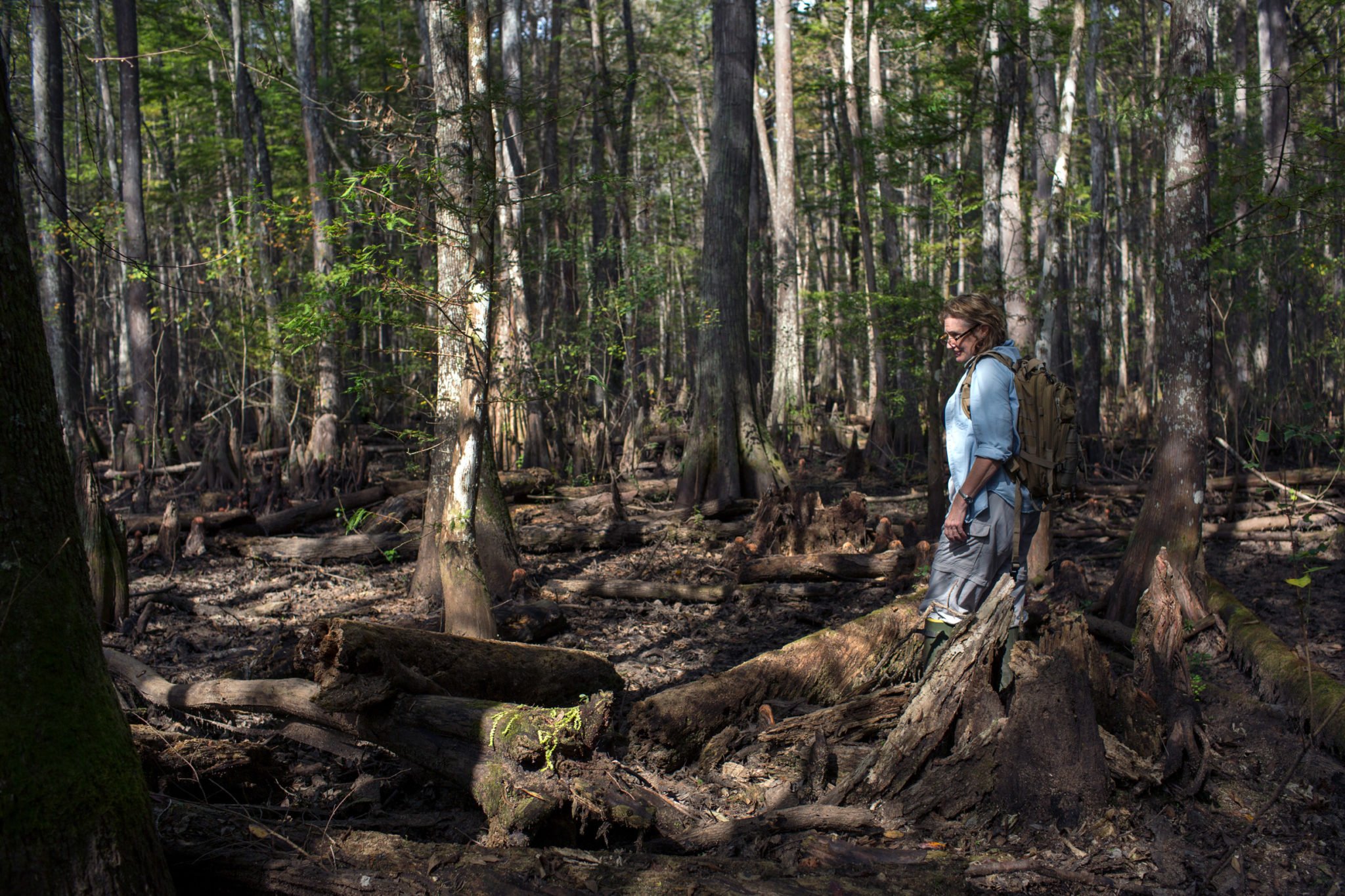
Halvorsen calls Montana home, but after living in Saratoga for eight years, she thinks the locals are finally beginning to accept her. “They had a really horrible opinion of the Park Service,” she says. Partly that had to do with the metal gate that separates the Big Thicket Field Research Station from the adjacent homes of Saratoga residents. “This woman that was involved with the Park Service was adamant about putting a gate up so they couldn’t use this road — because this is an actual road,” Halvorsen says. “It’s called Big Thicket Drive. It’s not our driveway.” People did not like the gate, and pulled it down or rammed it with their trucks, but Halvorsen now leaves it open. She has done a lot of work to “try to relieve people’s tension about what we’re doing out here.”
Saratoga residents had also been wary of Lance Rosier, the namesake of the nearby forest. Big Thicket Legacy, a collection of oral histories, describes the self-taught naturalist, who died in 1970, as “a hunter who never killed anything. He hunted plants — orchids, ferns, mushrooms, mosses…” Rosier is a kind of folk hero to those who come to the Thicket to study plants or fungi. He never married and spent most of his time collecting specimens from the forest. He learned along the way to identify the Thicket’s plants by their Latin names. Rosier’s archives at Lamar University contain his specimen logbooks, as well as an unemployment compensation card from 1938–39 and a clipping of “The House by the Side of the Road,” a poem by Sam Walter Foss that includes the verses: “There are hermit souls that live withdrawn / In the peace of their self-content … / But let me live by the side of the road / And be a friend to man.” Halvorsen admires the self-taught naturalists who still populate East Texas, not least because she is one herself. The first time she saw a slime mold under a microscope, she was enamored. “The spore, the fruiting body of a slime mold, is absolutely gorgeous under the microscope,” she says, “and that’s what got me going.”
Mycology is a field that attracts all types of people, including those inclined to find beauty in a slime mold. But the study of fungi was once considered unseemly. British mycologist William Delisle Hay wrote in 1887 that the individual who studies mushrooms must face “a good deal of scorn,” since “no fad or hobby is esteemed so contemptible as that of the ‘fungus-hunter,’ or ‘toadstool-eater.’” Researchers writing in the scientific journal PLOS ONE state that societies tend to be either mycophilic or mycophobic, meaning they either happily eat and forage for mushrooms in the wild or are cautious about doing so. “Southerners are kind of backward when it comes to mycology,” Lewis says. Mushroom foraging has never been a pastime in Texas, unlike in the Pacific Northwest. To the contrary, Texans have long considered wild mushrooms strange and dangerous, when they have considered them at all.
An 1879 edition of the Jasper News-Boy includes the following joke: “Ignorant young man to Professor Tyndall — ‘Professor, how is a man to tell a mushroom from a toadstool?’ — Professor: ‘By eating it. If you live, it is a mushroom, if you die, it is a toadstool.’” Fungi conjure “visions of rotting vegetation,” Parks and Cory wrote. Mushrooms were seen as crop destroyers and covert killers, not anything one would risk eating. People ate nearly everything from the forest: acorns, wild honeysuckle, grapes. But though “there was lots of mushrooms” in the Big Thicket, in Rosier’s observation, “people didn’t know how to use them.”
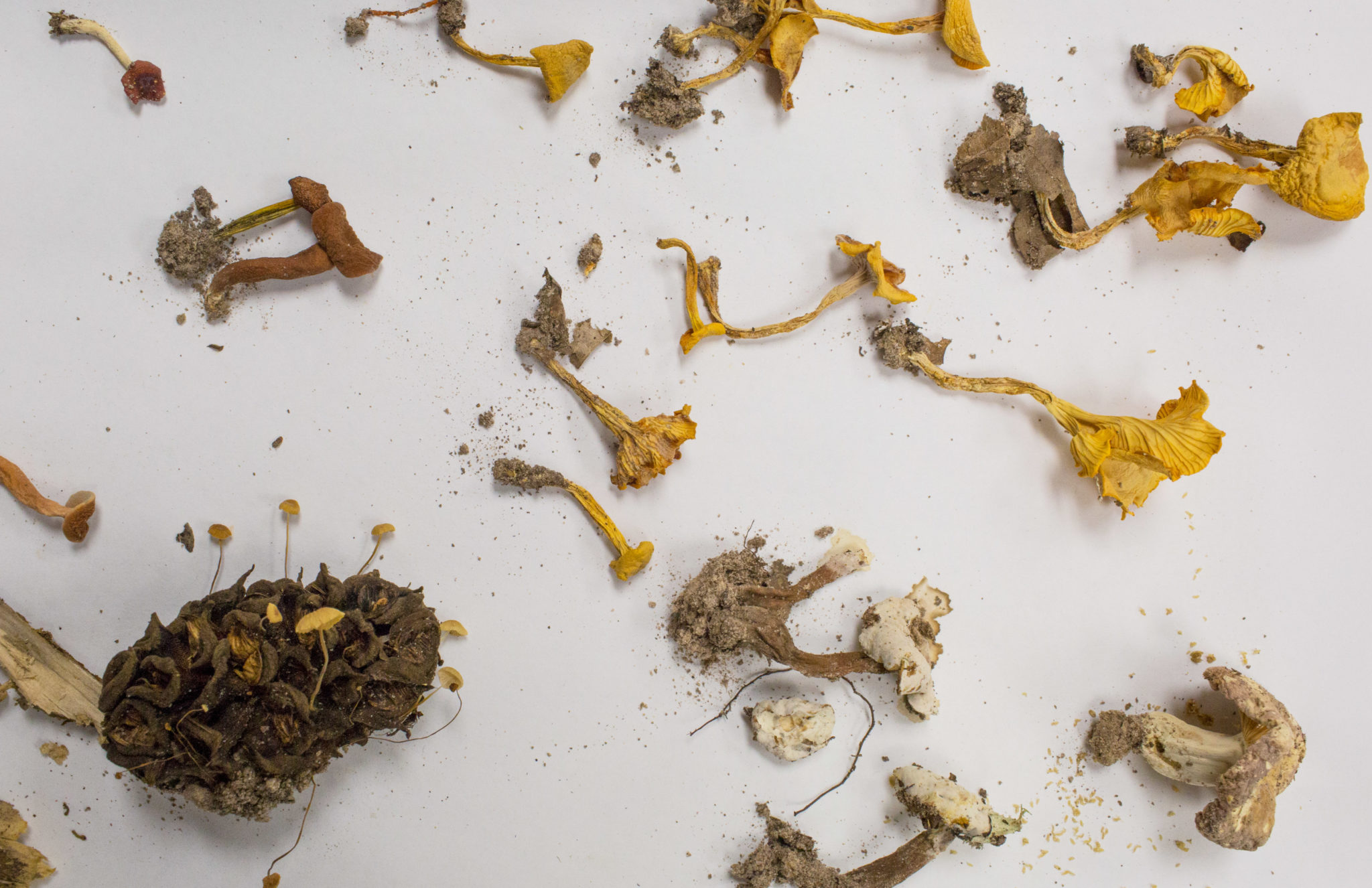
States with abundant wild mushrooms, including Oregon and Washington, typically regulate their commercial harvest. Texas exercises much less vigorous oversight of foraging. A Department of Agriculture study noted that Texas’ only laws regarding commercial foraging are: Don’t forage on private property, and don’t harvest any mushrooms taller than 6 feet. Otherwise, wild mushroom foraging is wide open in Texas, though Ginder does encourage mushroom hunters to avoid “collecting anything too much, whether berries or mushrooms. It is a preserve and a place that we strive to protect.”
The one aspect of mushrooms that is highly regulated in Texas, and in the rest of the United States, centers on the legality of the mind-altering chemical psilocybin. Ever since LIFE magazine published its 1957 cover story “Seeking the Magic Mushroom: The Discovery of Mushrooms That Cause Strange Visions,” curious Americans have attempted to replicate the psychedelic trip taken by mycologist Robert Gordon Wasson during a shamanic ritual in Mexico. Just over a decade after the article, Congress amended federal drug laws to reflect the United Nations Convention on Psychotropic Substances. In Texas, the possession of psilocybin can be a firstdegree felony, carrying a prison sentence of five years to life. The illegality of psilocybin compounded old stigmas and gave birth to new ones.
In certain areas of the Big Thicket, hallucinogenic mushrooms can be found “growing like weeds,” Halvorsen says. But most mycologists are not on the hunt for mushrooms that cause strange visions. Every year Lewis leads mushroom-seeking forays in Texas and Louisiana, meeting up with old friends and members of the Gulf States Mycological Society, and also seeing new faces. Mycology is a novice-friendly field that welcomes amateurs. Even newcomers have a decent chance of discovering a new mushroom; Lewis and several of his friends have mushrooms named after them. Anyone wishing to “make a desirable contribution to science” should study the fungi of the Thicket, wrote Parks and Cory in their 1936 survey.
Since mycologists have overlooked the South for so long, Lewis’ findings — housed at the Chicago Field Museum and Lamar University — provide one of the most complete pictures of the richness of mushroom life along Texas’ coastal plain. Yet Lewis still sees many unknowns. “North America is so underexplored, it’s pitiful,” he says, in part because “there are so many species that no one person can know them all.” For example, a colleague of Lewis’ studies the “little black crust things on wood,” while Lewis studies fleshy fungi. “I look at these black things and go, ‘Well, that’s nice,’” Lewis says.
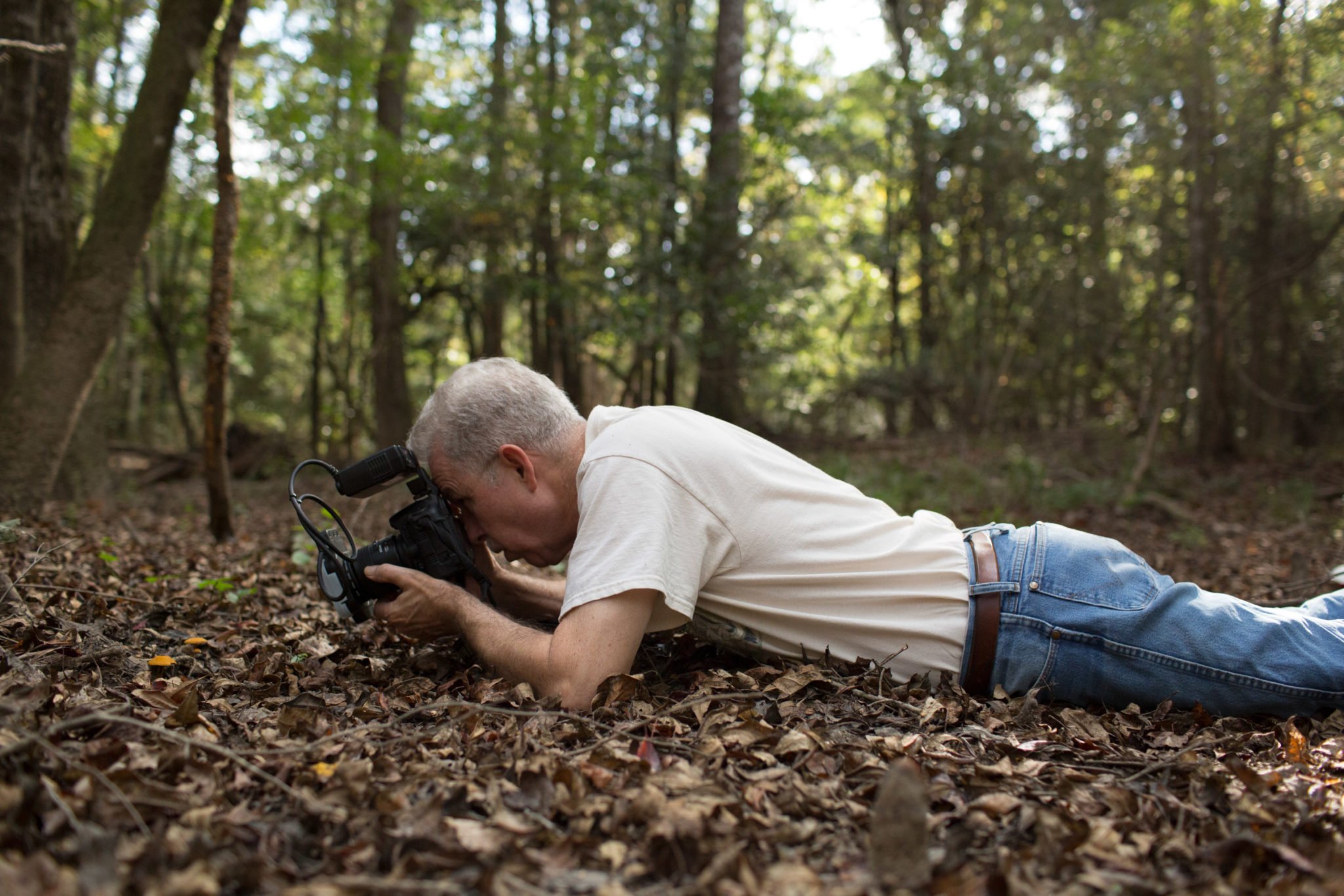
The Biodiversity Inventory is at a stage where it’s no longer just documenting. “Now we’re moving further on into seeing how [species] are interacting with what’s living out there,” Halvorsen says. “What’s living together and what’s causing things not to live together anymore.” The wild hogs that stampede through the Rosier Unit, eating and tearing up everything in sight, play a large part in determining what life survives in the Thicket. Halvorsen recently discovered a small branch with slender green pods that she knew wasn’t native to the unit. She could only speculate that the hogs had carried it in.
Lewis has been doing this long enough to see a few new mushrooms appear in Texas, while others seem to have faded away. He calls the 2011 drought the worst year for mushrooms in his lifetime. Many times, he will see a mushroom only once. Asked for a nomination to a threatened species list, he picked his cemetery mushroom, the Amanita westii. But on our afternoon visit to the cemetery, the Amanitas have yet to resurface. “You don’t know unless you look,” he says.


